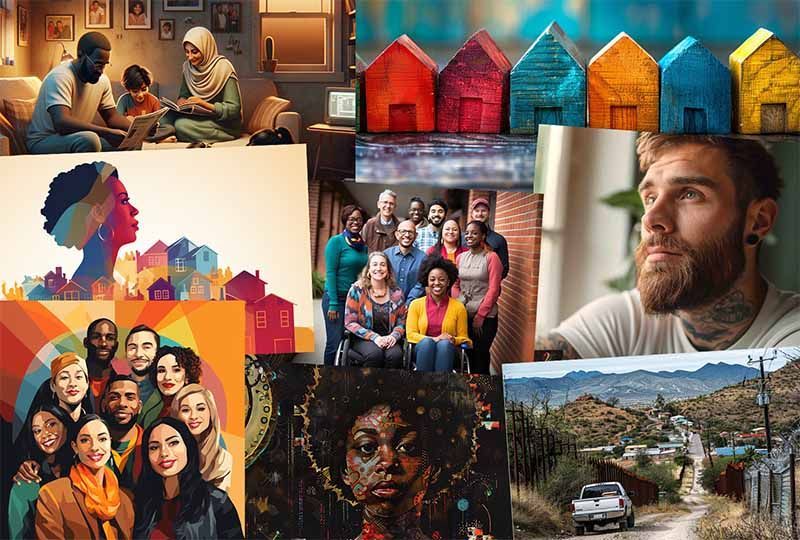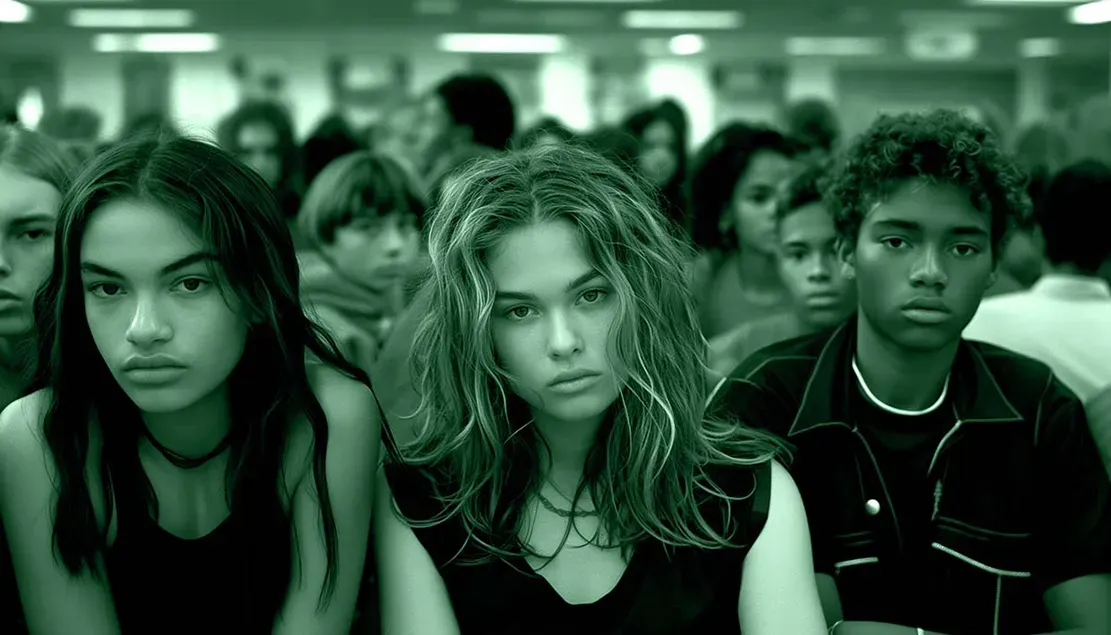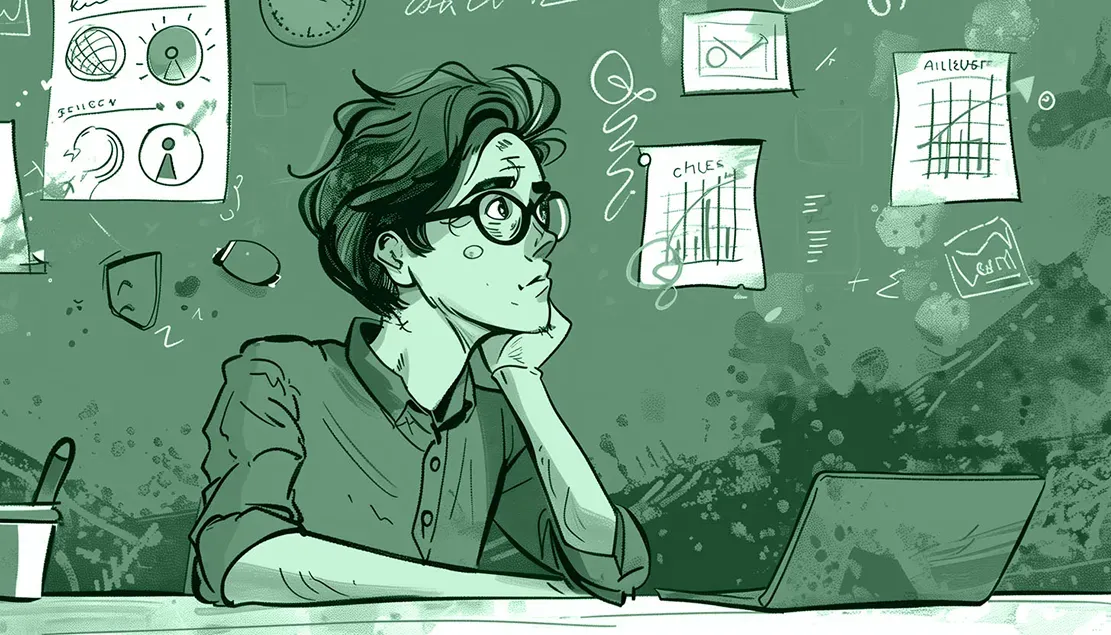Analyze, Organize, Rebrand and Rebuild
In April of 2023, through a referral, I was introduced to the Southwest Fair Housing Council (SWFHC), a nonprofit organization that supports individuals who confront illegal housing discrimination in Arizona.
During several exploratory/discovery meetings with SWFHC's Director, it became clear that their website was unsalvageable. Operating on a seven-year-old Squarespace template that had become a cobweb of broken links, missing images, and erratic layouts that defied explanation—there truly was no hope for the old site.
Below:
- Main navbar layout would shift depending on the page
- Sub, side bar menu links were inconsistent depending on the page
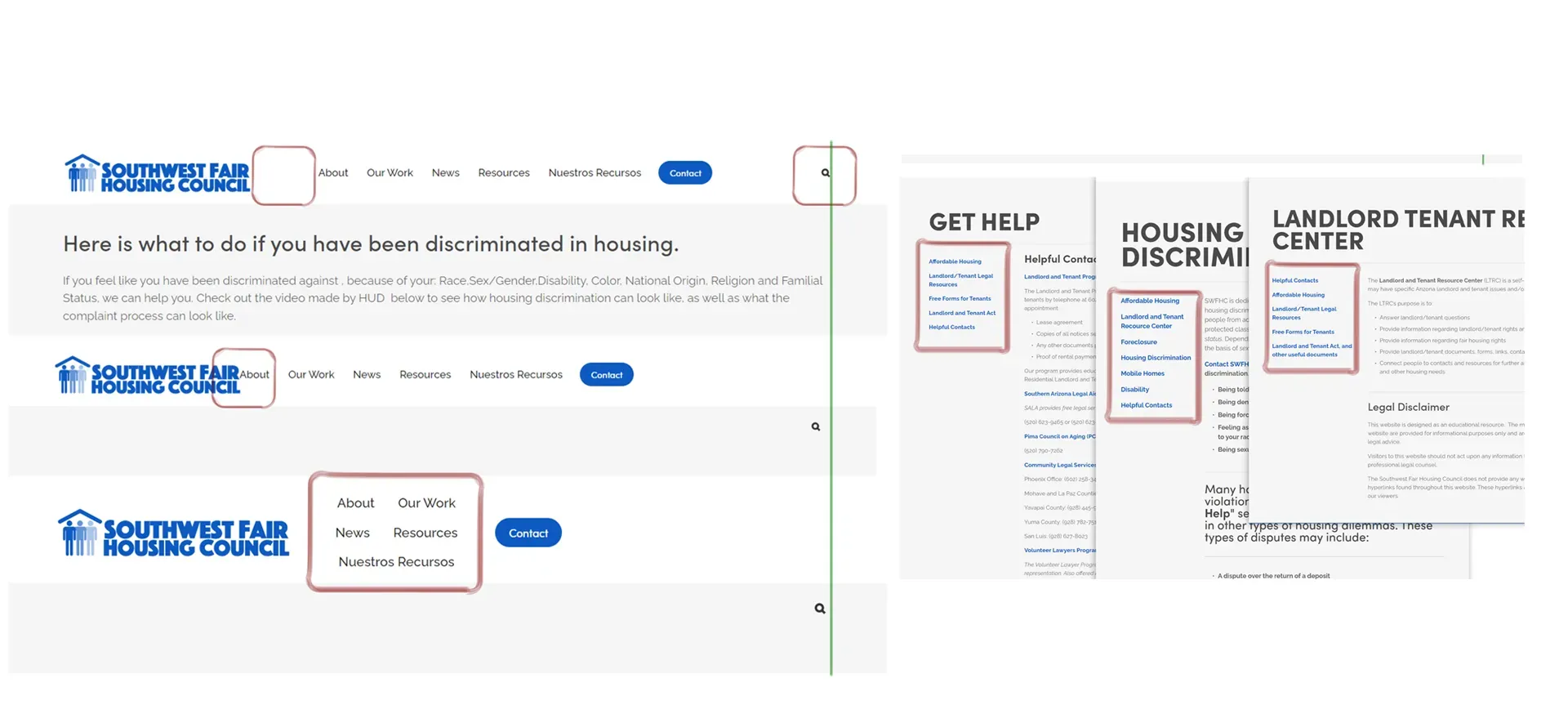
Akin to unraveling a tightly knotted ball of yarn—I sorted through layers of web content (English & Spanish) to decipher what SWFHC was trying to communicate and offer to its various users. After a few deep dives and lots of questions I eventually was able to bucket the content in the following ways:
- Filing a Fair Housing Claim (Understanding when and how to file a claim)
- Fair Housing Education (End-user vs Professionals)
- Fair Housing Resources (Consolidated into one page)
- Blog for Government & Housing Professionals (Sociological/Academic reports, advocacy, policy,etc)
- End-user Blog for Community News & Resources (Local events, grassroot initiatives, Events, social commentary)
- About SWFHC
Below:
- A stable, simplified Main Nav bar with clearly defined, top of funnel titling to better direct site visitors into the website.
- Social media icons placed on Main Navbar to encourage follow-ship.
- A site-wide 3rd party translator available in 6 different languages; a requirement by HUD that SWFHC had not been able to achieve before the redesign.
- Equally, the translator resolved the confusing mess of multiple pages, some in English, some in Spanish, and not all equally translated
- Further, the translator resolved the laborious (rarely accomplished) task of manually updating English to Spanish across the site
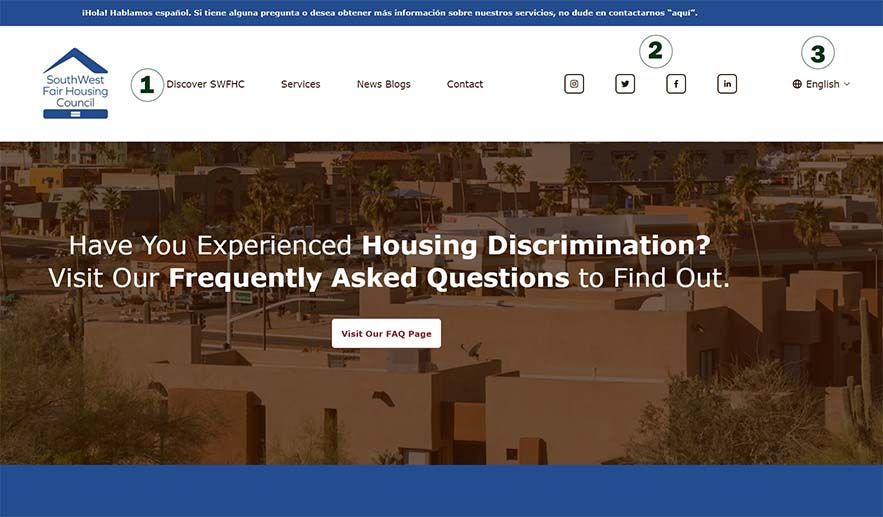
Once the path was made clear, I started the reconstruction process on a modern Squarespace template. But dear reader, the amount of work that went into this project is far too long to detail, so I will simply spotlight just a few more noteworthy changes/optimizations from here on out.
Content Development & Stronger Branding for Growth
Another key objective the Director tasked me with was to create SWFHC's first Brand Guideline book and to redesign their logo.
Logo Refresh
The original SWFHC logo stirred some discord among its followers; the disability community found the font difficult, while the human illustrations faced criticism for lacking diversity. My remedy was straightforward: I omitted the figures, shifted the focus to the housing graphic, introduced an equality symbol, delivered a softer-edged modern design with a more legible font.
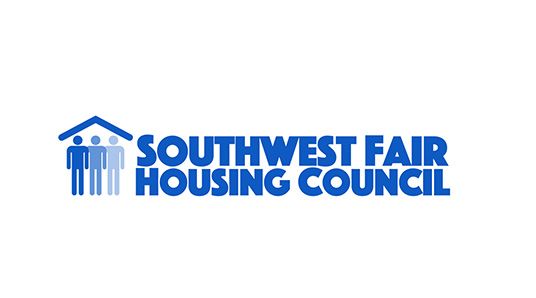
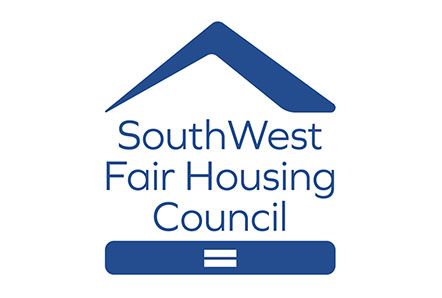
Brand Guidebook
Art is subjective; beauty is in the eye of the beholder; all well and true, but SWFHC suffered from too many artists in the studio. Content pieces varied in layout design, color use, graphic choices, etc, creating a disjointed, unprofessional look. Thus, the SWFHC brand book was instituted. Outlining specific color values, fonts, best practices for disability/accessibility, etc.
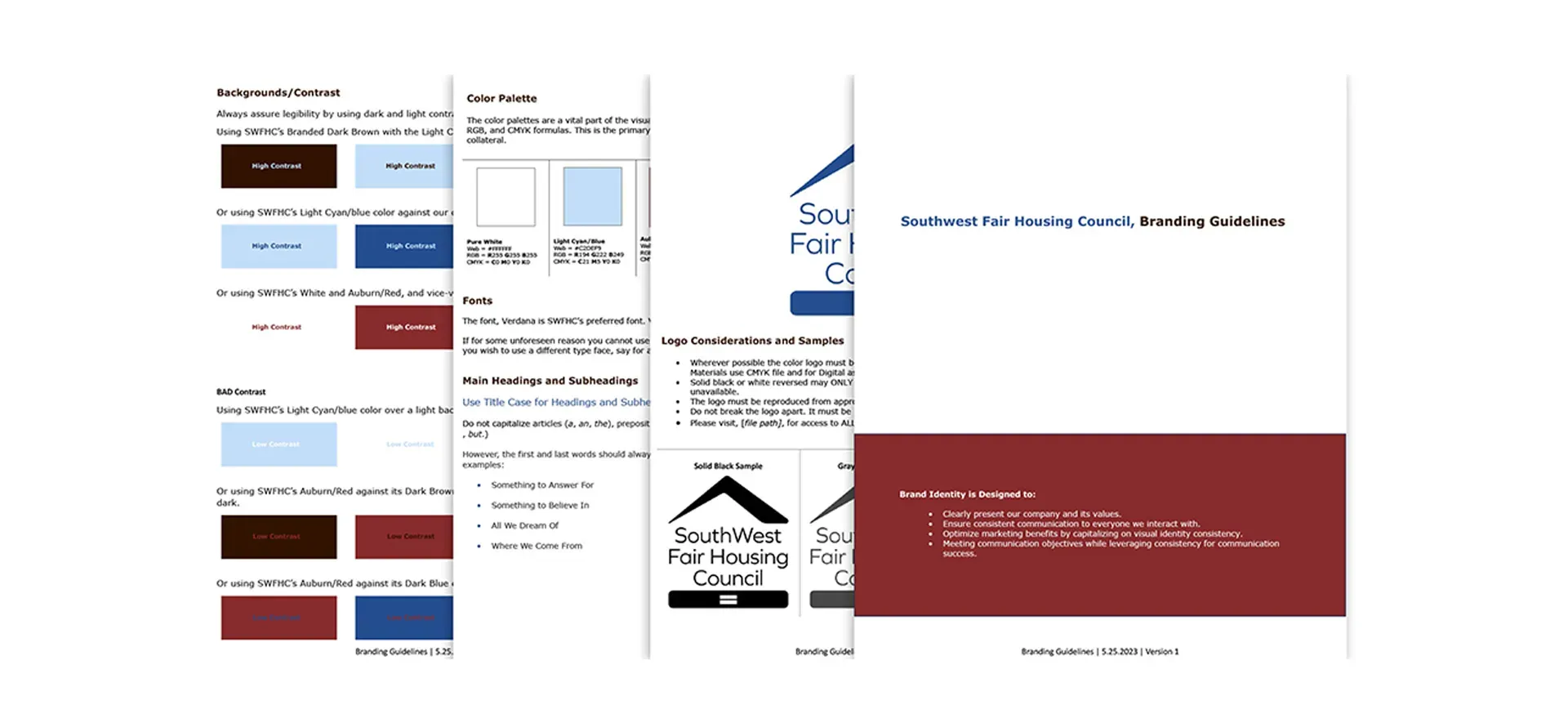
Housing Horizons Blog
During my analysis phase of the original website, I unearthed that SWFHC had fathered several academic papers exploring diverse sociological/discriminatory aspects around the state.
Often collaborating with Universities and Graduate students, SWFHC created several reports to help inform policymakers and educate the community; this led me to create Housing Horizons, a blog dedicated to the professional side of SWFHC.
I also built a LinkedIn business page to showcase this type of content and advised the Director to reshare onto his page to help grow his network and not let these pieces go unnoticed.
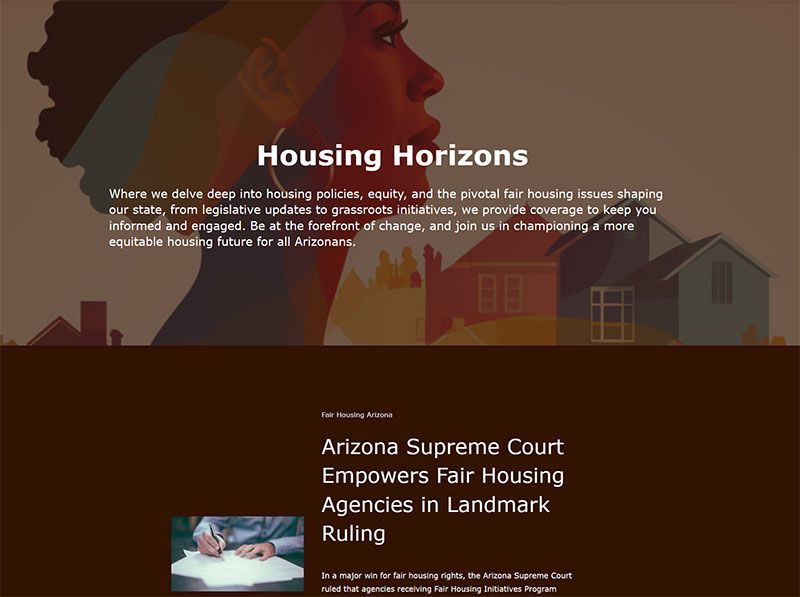
Fair Housing Focus Blog
The original website was based on spotlighting SWFHC services, but no thought was given to SEO development. Thus, I launched a consumer-focused blog to help target relevant keywords and drive thought leadership/expertise within Fair Housing.
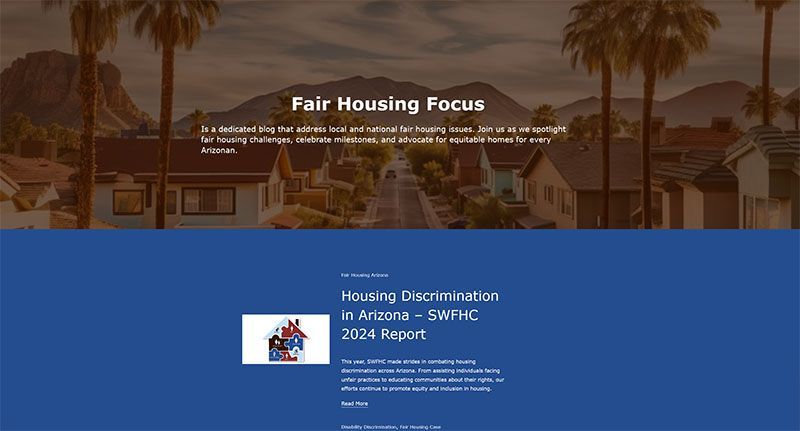
Quarterly Newsletter
The original Newsletter was sent via Mailchimp on an un-branded template with content mainly compromising of external links to other organizations.
However, I convinced the team to upgrade their Squarespace account to gain Email Campaigns functionality. Resulting in a branded Newsletter template to promote Housing Horizons, Fair Housing Focus, Press Releases (which I served as editor), and any other important organizational news.
Having the newsletter on the same platform as the website also afforded us the opportunity to:
- Whitelisted Email senders by migrating the site domain to Squarespace
- Have better database management of contacts and improved analytical data.
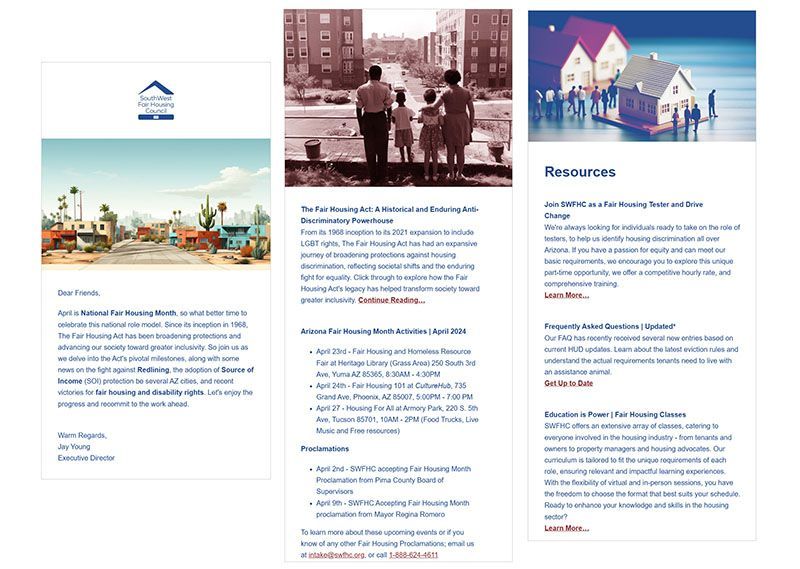
Source of Income (SOI) Protection Campaign
Once the dust had settled from the massive web rebuild, SWFHC also leveraged my AD campaign skills. Collaborating with my professional network, we developed several collateral pieces for the web, social media, and radio spots. Bringing valuable information to renters and housing providers about the new SOI ordinances passed in Tucson, Phoenix, and Tempe.
This campaign alerted housing providers about potentially hefty fines for discriminatory practices and educated renters about newly enacted legal protections around income-based housing discrimination. The campaign successfully directed significant web traffic to SWFHC's dedicated SOI information page, strengthening its role as a trusted community resource and advocate.
Below:
- Visitor spike during campaign
- Bilingual radio spots that aired locally in the designated cities.
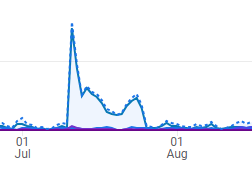
Don't Take my Word For it; Let's Look at The Data
For several months after the site relaunch, I continued an Ad-hoc relationship with SWFHC to develop more content, both for web and print. There is still much to do since their old website had made them very late to the game, and our monthly meetings continue till today.
Below:
Google Analytics data showing a nearly 42% increase in users and 33% improved in user engagement. Note, this 12-month comparison is based on the newly built site not against the old-site. Demonstrating the long-term impact of SEO content development and improved branding.
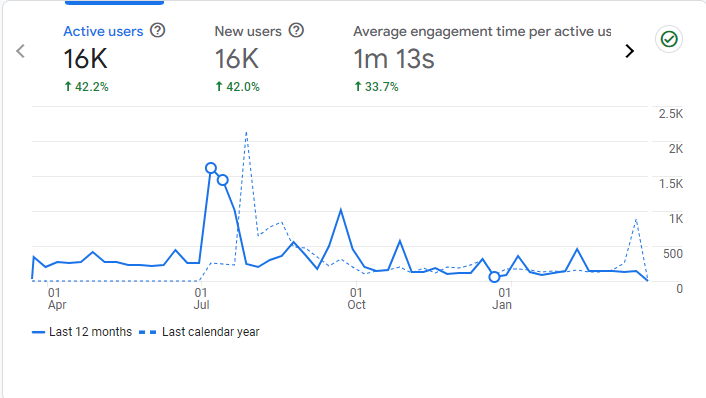
A Last Few Notable Mentions...
Resolving Event Registration Issues
A contentious, long-term issue that plagued SWFHC for years was their inability to have site visitors register for Fair Housing classes from their website.
This simple but powerful Eventbrite integration gave way to a significant increase in class registrations and, equally, a massive reduction in time wasted manually registering participants.
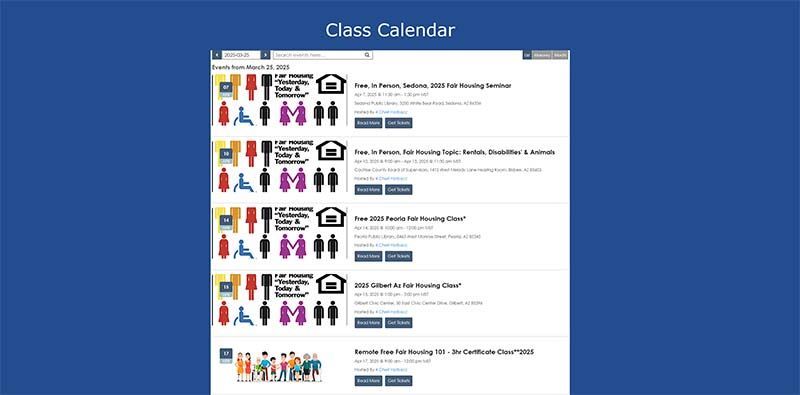
The Redlining Reports
Remember those academic papers I mentioned earlier? So, I actually got the opportunity to help complete two of them.
Collaborating with the Director and a Graduate Student at the School of Geographical Sciences & Urban Planning, Arizona State University. I created two professional InDesign documents for their reports on the housing discrimination practice of Redlining by banking/lending institutions.
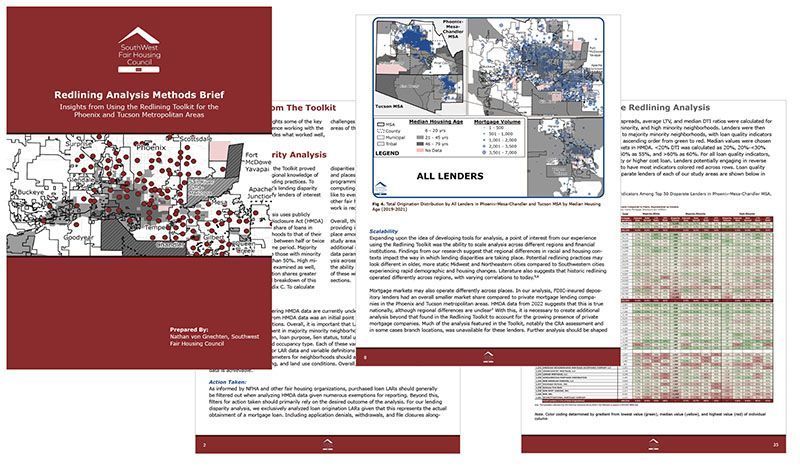
Print AD's
Created many Print and Web AD's.
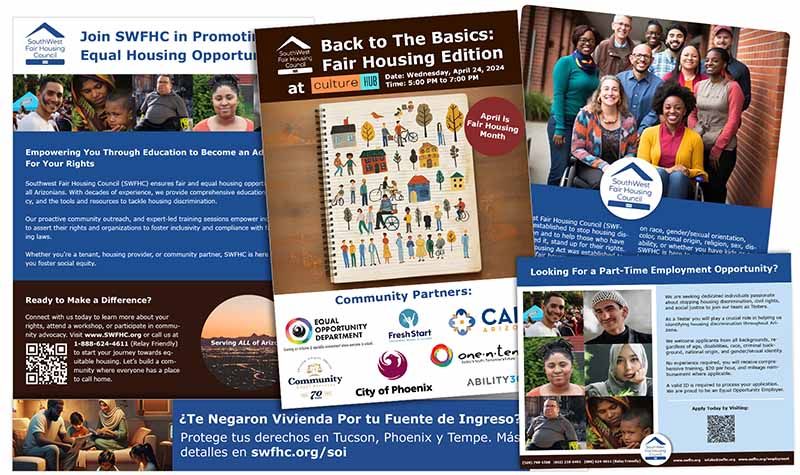
Fair Housing and The 7 Protected Classes: A Custom Logo.
The logo below was brainstormed from input by SWFHC's Outreach Manager and several rounds of prompting within Midjourney. However, the actual art file had to be executed by hand. Since it was intended for promotional use, the final output was created in Adobe Illustrator.
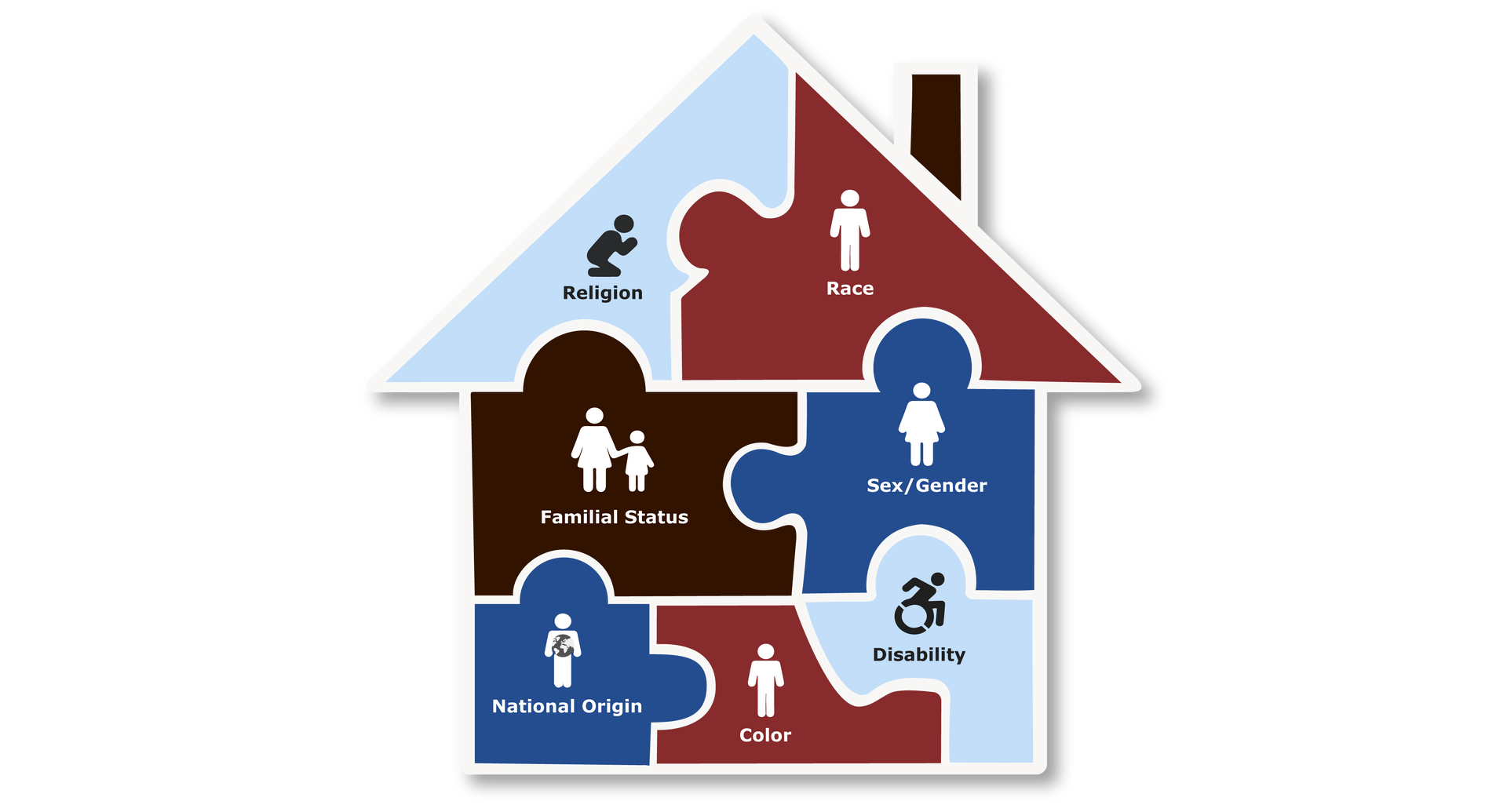
Custom AI imagery
Speaking of Midjourney, it really came through for SWFHC. Providing the ability to create specific subject matter images for about 90% of all collateral (Print and Web). This was a tremendous time and cost saver, as trying to allocate imagery that depicts the necessary diversity within various housing scenarios was near to impossible and would have often required custom photo shoots.
